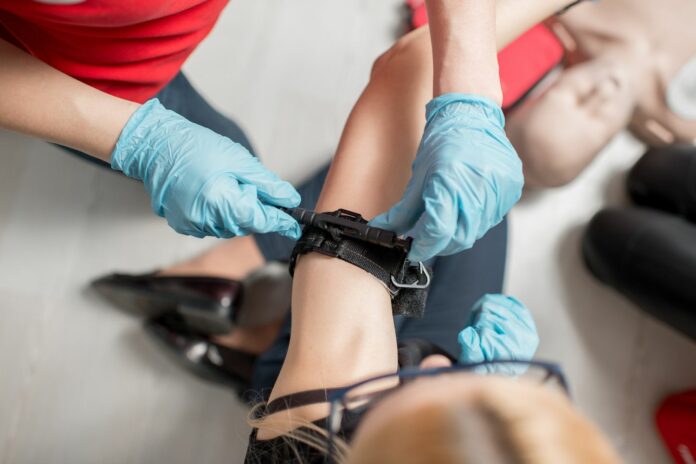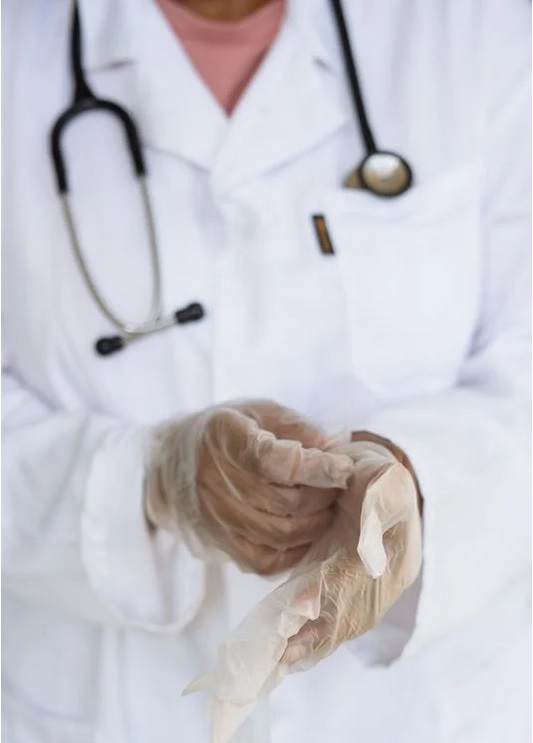
Accidents can occur unexpectedly, and when they do, prompt thinking and familiarity with basic first aid can greatly impact the outcome. A crucial situation that may arise is severe bleeding, whether it happens to you or a loved one. Knowing how to respond can determine life or death during such emergencies. In this guide, we provide a comprehensive overview of the essential steps to effectively manage severe bleeding until professional medical assistance is available.
Stay Calm and Assess the Situation
Panicking can impair your judgment and hinder your ability to provide assistance. Take a deep breath and, if possible, move the injured person to safety away from any ongoing dangers. Then, assess the situation. Is the bleeding severe? Is it bright red blood spurting out (arterial bleeding) or dark red blood oozing (venous bleeding)? This initial assessment will help you gauge the severity of the injury and determine the urgency of your response.
Call 911 or Visit Urgent Care
If the bleeding is severe and doesn’t stop with basic aid, call 911 without delay. In situations of severe bleeding, time is crucial. If you are in close proximity to a medical facility like a family urgent care clinic and it is safe to do so, consider taking the injured person there promptly.
Protect Yourself
Before you begin aiding the injured person, it’s crucial to safeguard yourself from possible infections. If disposable gloves are accessible, put them on; otherwise, you can improvise using a clean cloth or plastic bags if needed. Remember, your safety comes first.
Apply Direct Pressure
First, apply direct pressure to the wound. If available, use a clean cloth, sterile bandage, or even your hand, as long as you apply as much pressure as you can to stop the bleeding. Don’t lift the cloth or bandage to check if the bleeding has stopped, as this can interrupt the clotting. Rather, maintain constant pressure for at least 10-15 minutes. It’s better to maintain consistent pressure until medical assistance arrives, just to be safe.
Elevate the Injured Area
If you can, try raising the injured area above the level of the heart. This can help decrease blood flow to the wound and lessen bleeding. But you must be careful when doing this. If you think there might be a bone fracture, elevating the limb could obviously cause more harm, so in that case just stick to applying pressure to the wound.
Use Pressure Points
If the bleeding is severe and won’t stop, you can try using pressure points. These are specific areas on the body where you can apply pressure to control the bleeding. For instance, you can apply pressure to the brachial artery in the upper arm or the femoral artery in the thigh. However, be careful when applying pressure to these points, as it can also cause more pain.
Apply a Tourniquet as a Last Resort
As a last resort, only use a tourniquet when all other methods fail to control bleeding. Incorrect application or prolonged use can result in complications. If there are no other options, find a wide, non-elastic band like a belt or clothing. Place it several inches above the wound and tighten until the bleeding stops. Be careful not to overtighten; this can harm the surrounding tissue.
Keep the Injured Person Calm
When someone is severely bleeding, it’s common for them to experience shock. It’s important to keep the injured person calm by providing reassurance and support. Keeping them warm under a blanket is crucial, as shock can lead to a decrease in body temperature.
Monitor for Signs of Improvement or Deterioration
Closely monitor the injured person’s condition. Keep an eye out for any signs of improvement or worsening. If the bleeding doesn’t stop or gets worse, keep applying pressure and seek immediate medical help.
Document the Incident
When professional medical help arrives or you reach an urgent care facility, make sure to give them a detailed account of what happened. Remember to document the time, date, and any actions you took, such as applying tourniquets or pressure points. Providing this information will help healthcare professionals give you the best possible care.
Conclusion
Dealing with excessive bleeding can be a scary situation, but don’t worry! With the knowledge and confidence you’ll gain from this step-by-step guide, you’ll be able to take effective action and potentially save a life. Remember, the most important steps are to stay calm, call for professional help when needed, and apply direct pressure to the wound. Whether it’s a small injury or a major emergency, being prepared and knowing what to do can truly make a difference. Make sure you equip yourself with these life-saving skills and share them with your loved ones so that everyone is ready for the unexpected.











